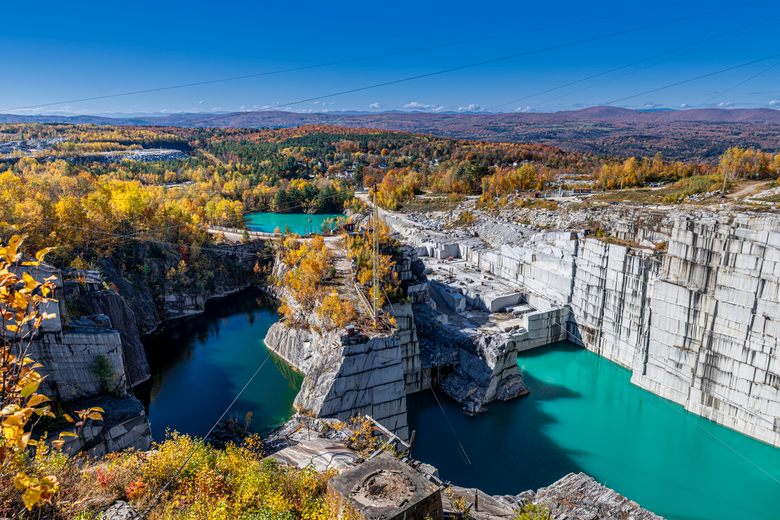Checking Out Granite Quarries in South Africa Sector: From Quarry to Masterpiece
Checking Out Granite Quarries in South Africa Sector: From Quarry to Masterpiece
Blog Article
Discovering the Rich History and Sustainable Practices of Granite Quarrying
As we depend on the precipice of discovering the intricate tapestry of granite quarrying, a trip with time discloses not simply the physical act of removing rock however additionally the cultural and historical significance woven into the extremely textile of this method. From the old origins that laid the structure for modern quarrying methods to the sustainable techniques that are forming the future of this sector, each chisel mark on granite surfaces narrates waiting to be unearthed (granite quarries in south africa). The heritage of granite quarrying extends much past plain extraction; it is a testament to human resourcefulness, strength, and the long-lasting appeal of this marvelous rock
Old Origins of Granite Quarrying
Dating back to old civilizations, the method of quarrying granite has actually been an indispensable component of human background and architectural advancement. The earliest evidence of granite quarrying go back to old Egypt, where huge pyramids and complex sculptures were crafted from this durable rock. The Egyptians made use of primitive tools to remove granite blocks from quarries, showcasing the value of this product in their monumental constructions.
Moving on in history, the Greeks likewise made considerable contributions to the quarrying of granite. The Greeks used granite in numerous architectural wonders, such as temples and statuaries, demonstrating their ability in shaping and carving this hardy stone. The Romans additionally fine-tuned the methods of quarrying granite, employing innovative tools like knives and hammers to extract and form granite for their legendary structures.
With the centuries, the technique of quarrying granite has actually advanced, with modern-day technologies enhancing performance while keeping the timeless appeal of this all-natural stone - granite quarries in south africa. From ancient human beings to modern home builders, the heritage of granite quarrying remains to form our world
Evolution of Quarrying Techniques
The evolution of quarrying methods has actually been noted by a continual progression towards higher performance and accuracy in extracting granite. From the rudimentary techniques employed by our forefathers to the sophisticated innovations made use of in contemporary quarrying operations, the sector has undertaken significant innovations. Early quarrying methods included manual work with basic devices such as chisels, hammers, and wedges to extract granite blocks from the earth. As civilizations progressed, strategies like fire-setting and primitive dynamites were introduced to facilitate the extraction procedure.
In even more current times, the development of equipment changed the quarrying industry, enabling much faster removal rates and boosted efficiency. Technologies such as diamond cable saws, high-pressure water jets, and pneumatically-driven drills have actually become conventional in modern quarries, enabling accurate cutting and minimized waste. Innovations in computer-controlled devices and 3D modeling have enhanced quarrying operations, leading to very little ecological influence and improved sustainability practices. As the demand for granite continues to rise, the advancement of quarrying techniques stays integral to conference sector requires effectively and sustainably.
Cultural Value of Granite
Granite holds an extensive social significance across numerous civilizations due to its enduring visibility in building masterpieces and revered monuments. The social significance of granite extends past its physical features; it embodies resilience, security, and timelessness, making it an icon of withstanding heritages right here and customs.

Lasting Practices in Quarrying
In the middle of the abundant background of granite quarrying and its social importance exists an expanding emphasis on sustainable techniques within the market. As environmental awareness and problems regarding source depletion have actually heightened worldwide, the quarrying field has actually increasingly welcomed lasting approaches next to lessen its impact on the setting and surrounding neighborhoods.

Furthermore, improvement and rehab of quarry websites post-extraction are indispensable to sustainable methods. By restoring quarried locations to a natural or advantageous state, such as developing wild animals habitats or recreational areas, quarriers can offset the environmental impact of their procedures and contribute favorably to the local community.
Heritage of Granite Quarrying
With a historic backdrop steeped in craftsmanship and commercial development, what enduring influence has granite quarrying left on the landscape of contemporary culture? The tradition of granite quarrying transcends simple extraction practices; it has actually formed architectural marvels, city landscapes, navigate to these guys and cultural heritage worldwide. The sturdy nature of granite has actually made it a recommended option for monoliths, buildings, and infrastructure, standing as a testimony to the ability and creativity of quarry employees throughout generations.
Additionally, the financial footprint of granite quarrying can not be neglected. The market remains to give work possibilities and drive neighborhood economic situations in regions where granite extraction is prevalent. It has actually likewise stimulated technological advancements in quarrying methods and devices, resulting in more effective and lasting techniques.
In regards to sustainability, the heritage of granite quarrying consists of initiatives to reduce ecological influences via improvement jobs and liable source administration. By stabilizing financial rate of interests with ecological stewardship, the market aims to ensure that future generations can remain to gain from this enduring all-natural resource.
Final Thought

Report this page